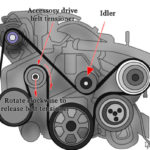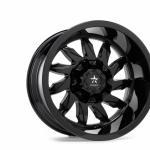Automotive Exhaust System 101:
BACK TO BASICS
The exhaust system of a vehicle is designed to transport smoke, fumes, and toxins created by the combustion process. In many ways, the system works like our liver and digestive system as it filters and expels poisonous toxins. That analogy is purely meant to be educational, but I’m certain the Beavis & Buttheads of the internet are going to have a field day with the idea. I look forward to the entertaining commentary, who doesn’t love a good muffler joke?
Video: Flowmaster’s 3 Different Exhaust Types
The Building Blocks
An automotive exhaust system is a bit more complex than some think. From the exhaust manifold to the muffler, each section can be customized to achieve different performance results.
Exhaust manifold:
The exhaust manifold attaches to the cylinder head and takes each cylinders exhaust and combines it into one pipe. The manifold can be made of steel, aluminum, stainless steel, or more commonly cast iron.
Oxygen sensor:
All modern fuel injected cars utilize an oxygen sensor to measure how much oxygen is present in the exhaust. From this, the computer can add or subtract fuel to obtain the correct mixture for maximum fuel economy. The oxygen sensor is mounted in the exhaust manifold or close to it in the exhaust pipe.
Catalytic converter:
This muffler like part converts harmful carbon monoxide and hydrocarbons to water vapor and carbon dioxide. Some converters also reduce harmful nitrogen oxides. The converter is mounted between the exhaust manifold and the muffler.
Muffler:
The muffler serves to quiet the exhaust down to acceptable levels. Remember that the combustion process is a series of explosions that create a lot of noise. Most mufflers use baffles to bounce the exhaust around dissipating the energy and quieting the noise. Some mufflers also use fiberglass packing, which absorbs the sound energy as the gases flow through.
Exhaust pipe:
Between all of the above mention parts is the exhaust pipe which carries the gas through its journey out the tailpipe. Exhaust tubing is usually made of steel but can be stainless steel (which lasts longer due to its corrosion resistance) or aluminized steel tubing. Aluminized steel has better corrosion resistance than plain steel but not better than stainless steel. It is, however, cheaper than stainless steel.
A FEW TIPS
• Wash your vehicle thoroughly after driving on icy roads that have been salted to avoid damaging rust.
• Check engine light on? This could be a failing Oxygen Sensor
• If you love your ride and want to start customizing your exhaust system, start simple and upgrade to a high-quality OEM muffler.
COMPANY DETAILS |
 |
|
Company |
Flowmaster |
|
Website |
|
|
Connect |
    |
|
Contact |
|
|
Phone |
(707) 544-4761 |
|
Address |
1500 Overland Ct |
| West Sacramento, CA 95691 |
ABOUT Flowmaster®
Flowmaster was created 35 years ago as a solution to a growing problem with sound issues at race tracks in California and beyond. In his successful effort to quiet race cars without reducing performance, the founder refused to accept the status quo of the day and instead pushed exhaust technology beyond common thinking. This led to many firsts in automotive-exhaust science, as well as many patents protecting the various technologies used in Flowmaster products. With those developments, Flowmaster ushered in a revolution in automotive performance exhaust.
COMPANY VIDEO



